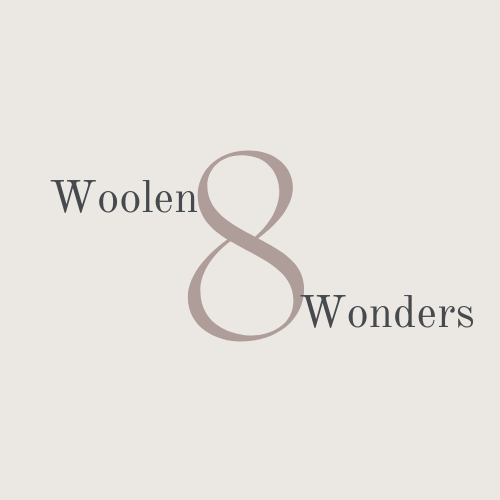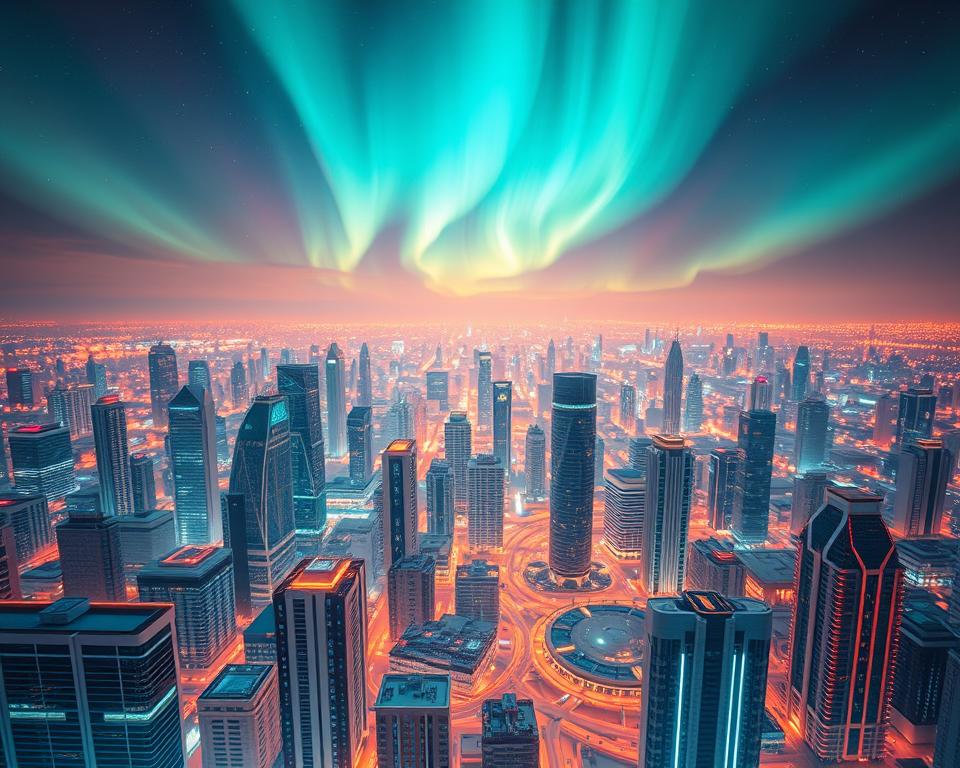Anúncios
Embroidered crochet, often referred to as a “threaded canvas,” is a captivating form of art that seamlessly blends the world of crochet with the intricate art of embroidery. In this unique craft, yarn becomes a medium for artistic expression, creating stunning, multidimensional designs. The fusion of these two crafts results in a mesmerizing art form that allows artists to convey emotions, tell stories, and even communicate political messages. This article is an examination of the world of embroidered crochet, from its historical roots to its contemporary relevance, and how it serves as a threaded canvas for artistic innovation.
The Artistry of Embroidered Crochet
Embroidered crochet is more than just a craft; it’s a form of art. It transcends the traditional boundaries of crochet, allowing artists to create intricate and visually captivating pieces. In crochet, yarn is not just a material but a means of artistic expression. This craft allows for the creation of multidimensional designs that tell stories, evoke emotions, and provoke thought. One of the remarkable aspects of crochet is its versatility. Artists can incorporate a wide range of techniques, from delicate lacework to bold and textured designs. The interplay of color, texture, and stitch patterns adds depth and complexity to the artwork. Embroidered crochet pieces often elicit strong emotional responses from viewers, making it a strong form of art. In many ways, embroidered crochet challenges the conventional distinctions between art and craft. It blurs the lines, reminding us that creativity knows no boundaries. Artists working with crochet are often pushing the envelope, delving into new techniques and concepts. This continuous innovation keeps the art form fresh, exciting, and relevant in contemporary art.
A Historical Tapestry: The Origins of Embroidered Crochet
The origins of embroidered crochet can be traced back through a rich historical tapestry that spans cultures and centuries. This craft has a long and storied history, and its roots are deeply intertwined with the history of both crochet and embroidery. Different cultures have contributed to the development of this unique art form, resulting in a diverse range of techniques and styles. Embroidered crochet’s journey through history is a fascinating one. Its early usage varied from practical applications, such as creating functional garments, to the creation of intricate lace doilies and table linens. Throughout history, crochet has been utilized as a means of adorning and enhancing textiles. Notable pieces have graced the homes of royalty, symbolizing luxury and elegance. In some cultures, embroidered crochet served as a form of storytelling. Patterns and motifs were used to convey cultural and historical narratives. The artistry of crochet was not only decorative but also a means of preserving traditions and passing down stories through generations.
Materials and Tools for Embroidered Crochet
Embroidered crochet, like any craft, requires specific materials and tools to bring the artistic vision to life. Understanding these components is fundamental to creating successful embroidered crochet pieces. Yarn selection is a critical first step. The choice of yarn influences the texture, color, and overall appearance of the artwork. Artists must consider factors such as color palettes, yarn weight, and fiber content. The interplay of different yarns in a single piece can add depth and complexity to the design.
Hooks are another essential tool in crochet. The selection of hooks depends on the artist’s preferred style and the project’s requirements. Different hook sizes can create various stitch sizes, which, in turn, impact the overall design. Whether using steel, aluminum, or ergonomic hooks, artists choose the tools that best suit their needs. In addition to yarn and hooks, embroidery threads play a role in embroidered crochet. These threads are used to create the intricate surface designs that define the art form. They come in a wide range of colors and textures, allowing artists to add fine details and embellishments to their pieces. Achieving a harmonious balance between these materials and tools is essential to the success of an embroidered crochet project. It is the artist’s unique vision, paired with their choice of materials and techniques, that results in a finished piece that truly stands out as a threaded canvas of art.
Anúncios
The Intersection of Crochet and Embroidery Techniques
The art of embroidered crochet is characterized by its ability to seamlessly blend crochet and embroidery techniques. This intersection of two crafts requires a deep understanding of both crochet and embroidery. Artists who excel in this form are skilled in a range of techniques that make their creations truly unique. At its core, crochet involves creating loops with yarn and pulling them through other loops to create a fabric. This technique provides the foundation for embroidered crochet, as crochet stitches form the canvas on which embroidery is worked. Artists use various crochet stitches, from simple chains to complex double crochets, to construct the base fabric for their designs.
Embroidery, on the other hand, focuses on surface embellishment. Artists use a variety of embroidery stitches to create detailed designs on the crochet fabric. These stitches include backstitch, satin stitch, and French knots, among others. Embroidery threads, often in contrasting or complementary colors, are used to add texture and depth to the crochet piece. The art of embroidered crochet lies in the balance between crochet and embroidery techniques. Artists must have a deep understanding of how these techniques complement each other to create visually appealing and emotionally resonant pieces. Achieving this balance requires practice, experimentation, and a keen eye for design.
Threaded Canvas in Contemporary Art
In recent years, embroidered crochet has gained recognition in the contemporary art world. It is no longer confined to the realm of crafts but has made a significant impact in the art community. This unique medium has allowed artists to break free from traditional artistic conventions and create thought-provoking and visually stunning pieces. Contemporary artists have embraced embroidered crochet as a means of expressing complex ideas and emotions. They utilize the craft to communicate themes such as identity, social justice, and the human experience. The versatility of embroidered crochet allows artists to search for a wide range of styles, from abstract and avant-garde to realistic and detailed works.
Anúncios
Famous artists have emerged in the world of embroidered crochet, each with their unique style and approach. Their work challenges traditional notions of art and craft, blurring the lines between these categories. The art world has taken notice, and embroidered crochet pieces are now displayed in galleries and museums worldwide. This recognition further cements the importance of embroidered crochet as a legitimate and impactful art form. The emergence of embroidered crochet in contemporary art has led to a renaissance of creativity. Artists are continually pushing boundaries and analyzing new techniques, ensuring that this art form remains relevant, fresh, and exciting. As embroidered crochet continues to evolve, it will undoubtedly inspire and captivate new generations of artists and art enthusiasts.
Creating Your Own Threaded Canvas
The beauty of embroidered crochet is that it is accessible to individuals of all skill levels. Whether you’re an experienced artist or a beginner, you can embark on your journey of creating your own threaded canvas. This section of the article will guide you through the process of starting an embroidered crochet project. To begin your embroidered crochet adventure, you’ll need to choose a pattern that inspires you. There are countless patterns available, ranging from simple and elegant designs to more intricate and challenging pieces. Your choice of pattern will influence the color scheme and the materials you’ll need.
Next, you’ll need to select the right materials, including yarn, hooks, and embroidery threads. The materials you choose should align with your selected pattern and the emotions or messages you want to convey in your piece. Pay close attention to color palettes and textures, as they play a significant role in the final appearance of your artwork. Once you have your materials, it’s time to familiarize yourself with the crochet and embroidery techniques necessary for your project. This may involve learning new stitches or practicing existing ones. Be patient with yourself, as embroidered crochet is both an art and a skill that improves with practice. The satisfaction of completing your embroidered crochet piece is unparalleled. You’ll not only have a visually appealing creation but also a unique form of artistic expression. You can proudly display your threaded canvas as a testament to your creativity and skill.
The Poetic and Political Expressions in Embroidered Crochet
One of the remarkable aspects of embroidered crochet is its ability to convey emotions and messages. Artists often use this craft as a means of poetic and political expression, allowing them to share their thoughts, feelings, and convictions. In the world of embroidered crochet, artists can express a wide range of emotions. Delicate and intricate pieces may convey feelings of serenity and nostalgia, while bold and textured works may evoke a sense of passion or intensity. The choice of colors, stitches, and patterns plays a role in communicating these emotions.
Embroidered crochet also serves as a platform for political expressions. Artists have used their pieces to raise awareness of important issues, challenge the status quo, and engage in social and political discourse. The ability to convey complex ideas through the medium of yarn and thread adds a unique layer to the strength of these messages. Stories of impactful embroidered crochet pieces that have sparked conversations and change are inspiring. These works serve as a reminder of the potential of art to engage, challenge, and inspire. The combination of artistic creativity and thoughtful messaging in embroidered crochet highlights the multifaceted nature of this craft.
The Future of Threaded Canvas
As we look to the future, embroidered crochet is poised to continue its evolution as an art form. It is an exciting time for this unique craft as it gains recognition and acceptance in the broader art community. The future of threaded canvas holds several intriguing possibilities. One of the emerging trends in embroidered crochet is collaboration with fashion designers. Fashion houses are recognizing the beauty and versatility of this art form and incorporating it into their collections. Embroidered crochet is being used to create stunning garments, accessories, and even footwear. This intersection of art and fashion opens up new avenues for artists and designers to examine. Innovation in technology is also impacting the world of embroidered crochet. Digital tools and software have made it easier for artists to create intricate patterns and designs. These tools allow for precise control over color selection, stitch placement, and texture, expanding the creative possibilities of this craft.
The future of threaded canvas also includes a growing emphasis on sustainability and conscious crafting. Artists are seeking eco-friendly and ethically sourced materials, aligning with the values of environmental responsibility. Embroidered crochet is becoming a means of expressing not only artistic ideas but also a commitment to sustainable practices. In the coming years, we can expect to see a fusion of tradition and innovation in embroidered crochet. This art form will continue to inspire and captivate artists and enthusiasts alike. It is a medium that encourages experimentation, challenges conventions, and invites new generations to dig into the world of threaded canvas. As embroidered crochet evolves, it will continue to be a form of artistic expression that captivates and enchants with its unique blend of craft and art.
The Versatility of Crochet
In the vast world of textile arts, embroidered crochet occupies a unique place, blending the precision of embroidery with the versatility of crochet to produce pieces that are both visually stunning and rich in texture. As we delve into the essence of this craft, it’s important to consider the role of color theory in embroidered crochet, a facet often overlooked yet central to the creation of compelling works. Color theory, the science and art of using color, plays a pivotal role in how an embroidered crochet piece is perceived, influencing mood, depth, and visual coherence. Artists adept in this craft carefully select their palette to convey a specific atmosphere or theme, harnessing the power of color relationships—complementary, analogous, triadic, among others—to create harmony and contrast in their work.
Moreover, the application of color theory extends beyond the aesthetic, touching upon the psychological impact colors have on the viewer. While avoiding any direct discussion of mental wellness, it’s observable that certain colors can evoke a wide range of responses based on cultural and personal associations. For instance, the use of vibrant reds and oranges can infuse a piece with energy and warmth, while cooler tones like blues and greens tend to create a calming, serene effect. These choices are integral to the narrative thread of an embroidered crochet work, allowing the artist to weave stories without words, solely through the language of yarn.
The physical texture of yarn adds another layer of complexity to this craft. Different weights and types of yarn can dramatically alter the final appearance and feel of a piece. Bulky, woolen threads contribute to a rustic, cozy aesthetic, ideal for pieces meant to convey warmth and comfort. On the other hand, fine, silky threads can be used to achieve delicate, intricate details that lend a piece a more elegant and refined look. This tactile dimension of embroidered crochet invites not just visual but physical interaction, encouraging viewers to experience the art with more than just their eyes.
As embroidered crochet continues to evolve, its practitioners are experimenting with innovative techniques and materials, pushing the boundaries of what can be achieved with yarn and needle. From incorporating unconventional materials like wire and recycled plastics to exploring three-dimensional structures, these artists are redefining the potential of embroidered crochet, proving that it is a dynamic and ever-expanding form of expression. This exploration not only highlights the technical skill involved in embroidered crochet but also emphasizes its adaptability and relevance in the modern art world.
In considering the evolution and current practices of embroidered crochet, it becomes evident that this art form is a multifaceted expression of creativity, skill, and vision. Its ability to blend color, texture, and form into cohesive, meaningful works makes it a compelling medium for artists and craftsmen alike. As we look toward the future, it is clear that embroidered crochet will continue to inspire and innovate, transcending traditional boundaries to explore new territories in the world of art and design. The journey of embroidered crochet, from its humble beginnings to its present-day incarnations, reflects a broader narrative of artistic endeavor, one that celebrates the intricate beauty and enduring appeal of working with yarn and needle.
Outcome
Embroidered crochet, often described as a “threaded canvas,” is a captivating and versatile form of art that brings together the worlds of crochet and embroidery. It is an art form that seamlessly blends traditional techniques with contemporary creativity, resulting in stunning, multidimensional designs. The history of embroidered crochet is a rich tapestry of cultural influences, and its roots can be traced back through centuries. The materials, tools, and techniques involved in this craft require skill and artistry, while the intersection of crochet and embroidery techniques allows artists to create truly unique pieces. Embroidered crochet has found its place in contemporary art, challenging traditional boundaries and serving as a medium for conveying complex ideas and emotions. The recognition it has gained in the art world is a testament to its artistic value and impact. As embroidered crochet continues to evolve, it remains accessible to individuals of all skill levels, inviting them to embark on their own artistic journey.
The ability of embroidered crochet to convey poetic and political expressions adds depth and significance to this art form. It serves as a platform for artists to share their stories, engage in important conversations, and inspire change. As we look to the future, embroidered crochet is poised to continue its evolution, with trends like collaboration with fashion designers and a commitment to sustainability shaping its path. Embroidered crochet is a form of artistic expression that enchants, inspires, and captivates, offering a threaded canvas for endless creativity and innovation.
See More At: woolen8wonders.com



